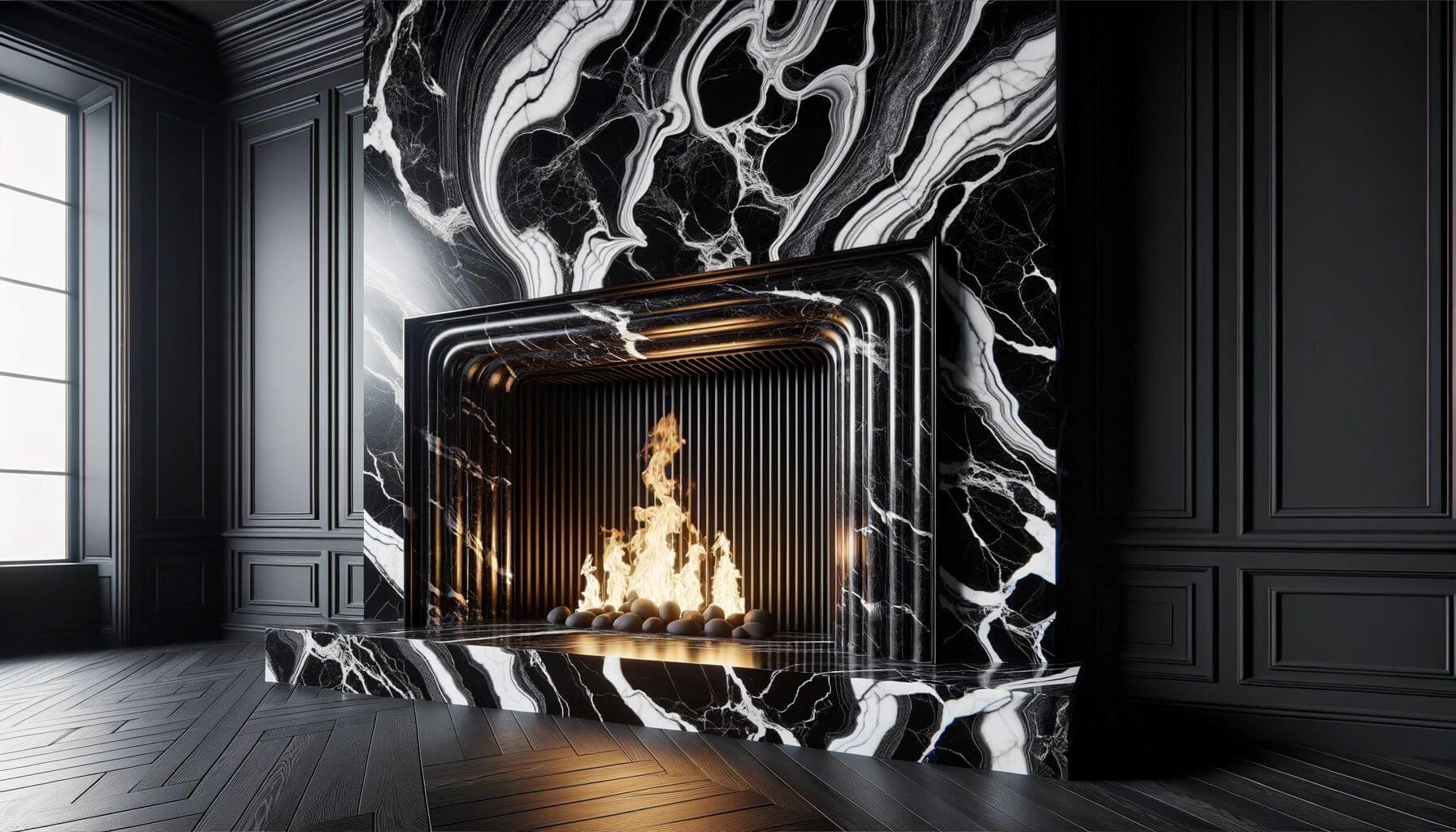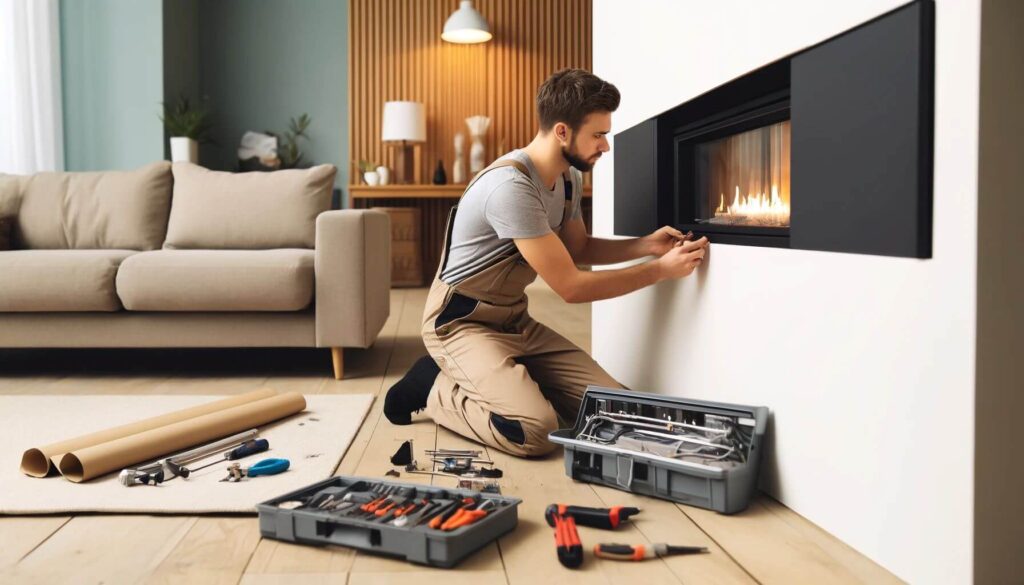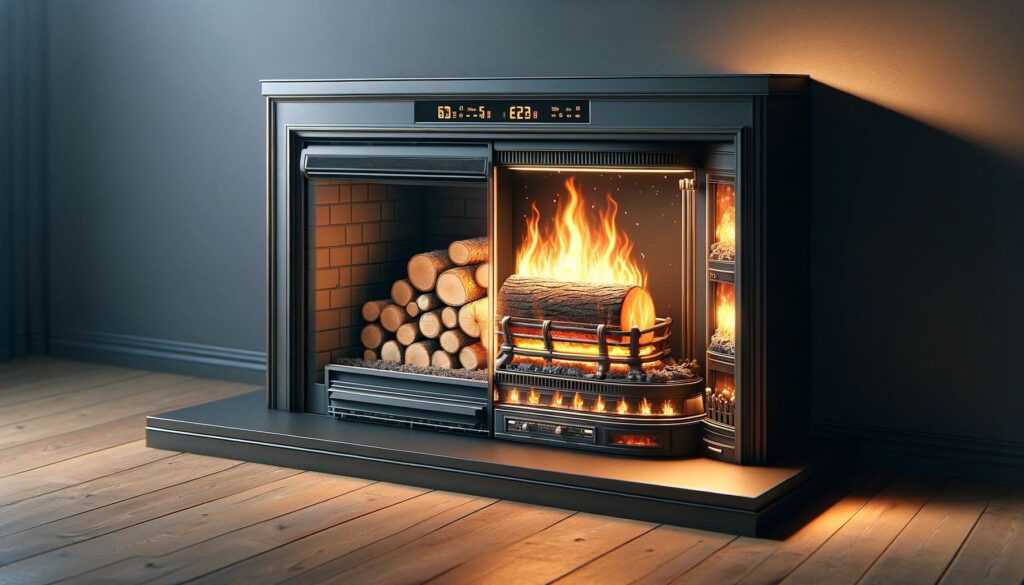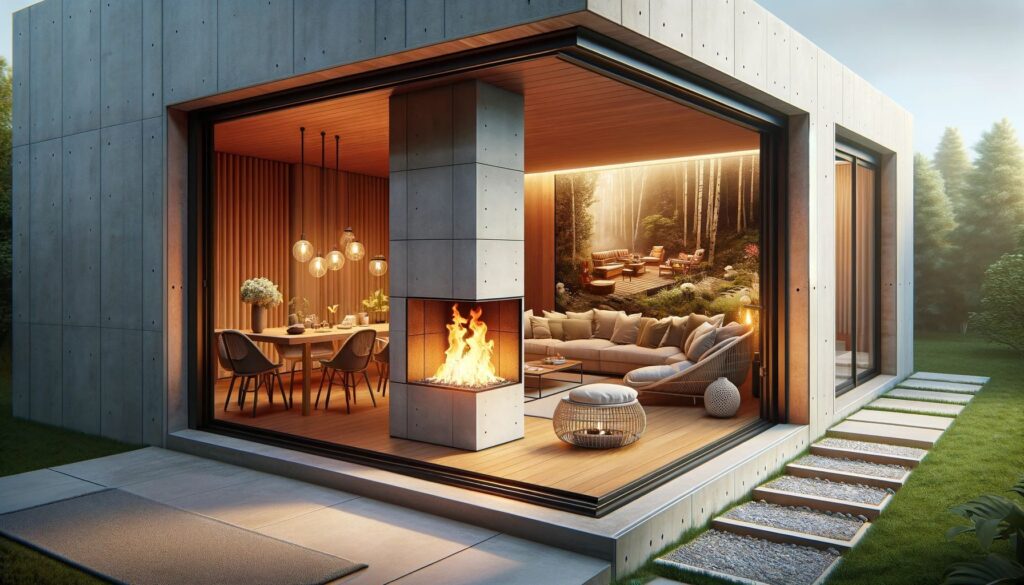
As the winter chill sets in, many homeowners turn to their fireplaces for warmth and comfort. However, not all fireplaces are created equal when it comes to heat output. Maximizing your fireplace’s heat efficiency can make a significant difference in your home’s warmth and your energy bills. In this comprehensive guide, we’ll explore various techniques and tips to help you get the most heat from your fireplace.
Understanding fireplace efficiency
Before diving into optimization techniques, it’s crucial to understand how fireplace efficiency works. Traditional open fireplaces are notoriously inefficient, with up to 90% of the heat escaping up the chimney. Modern fireplace designs and inserts have improved this significantly, but there’s always room for enhancement.
One key factor in fireplace efficiency is the type of fireplace you have. For instance, gas fireplace inserts with blowers are known for their heat efficiency. These units use a blower to circulate warm air throughout the room, maximizing heat distribution.
Choosing the right fuel
The type of fuel you use can greatly impact your fireplace’s heat output. Hardwoods like oak, maple, and hickory burn hotter and longer than softwoods, providing more sustained heat. If you’re using a gas fireplace, ensure you’re using the correct type of gas and that your system is properly maintained for optimal performance.
For those interested in eco-friendly options, consider exploring eco-friendly fireplaces. These modern designs often incorporate advanced technology to maximize heat output while minimizing environmental impact.
Proper fireplace maintenance

Regular maintenance is key to ensuring your fireplace operates at peak efficiency. This includes annual chimney sweeps, checking for and repairing any cracks or damages, and ensuring your damper is functioning correctly. A clean, well-maintained fireplace will burn more efficiently and produce more heat.
If you’re noticing issues with your fireplace, it might be time for a repair. For those in specific areas, services like fireplace repair in Las Vegas can help restore your fireplace to its optimal condition.
Optimizing your fireplace setup
The way you set up your fireplace can significantly impact its heat output. Here are some tips:
- Use a fireplace grate: A grate lifts the logs off the floor of the fireplace, allowing better airflow and more complete combustion.
- Install a fireback: A fireback is a cast iron plate that sits at the back of your fireplace. It absorbs heat and radiates it back into the room, increasing overall heat output.
- Consider a fireplace insert: Inserts can dramatically improve the efficiency of traditional open fireplaces. They’re essentially sealed combustion boxes that fit inside your existing fireplace, providing more heat with less fuel.
Maximizing heat distribution
Getting heat from your fireplace is one thing; distributing it effectively throughout your home is another. Here are some strategies:
- Use a blower: As mentioned earlier, blowers can significantly improve heat distribution. If your fireplace doesn’t have one built-in, consider adding an aftermarket blower.
- Open interior doors: This allows warm air to circulate more freely throughout your home.
- Run ceiling fans in reverse: In winter, run your ceiling fans clockwise at a low speed. This pushes warm air that has risen to the ceiling back down into the living space.
Sealing and insulation
Ensuring your home is well-sealed and insulated can help retain the heat your fireplace produces. Check for drafts around windows and doors, and consider adding weatherstripping if needed. Proper insulation in your walls and attic can also help keep the warmth inside.
Modern fireplace trends for efficiency

As we look to the future, energy-efficient fireplaces are becoming increasingly popular. These modern designs incorporate advanced technology to maximize heat output while minimizing fuel consumption and emissions.
Some trending features include:
- Direct vent technology: This allows the fireplace to draw combustion air from outside the home, improving efficiency and indoor air quality.
- Thermostat controls: Many modern gas fireplaces come with thermostat controls, allowing you to maintain a consistent temperature.
- Zone heating: This concept involves using your fireplace to heat the room you’re in, rather than the entire house, potentially saving on overall heating costs.
Fireplace accessories for heat maximization
Various accessories can help boost your fireplace’s heat output:
- Heat-powered fans: These sit on top of your wood stove or fireplace and use the heat generated to power fan blades, circulating warm air without electricity.
- Fireplace doors: Glass doors can help control the fire and prevent warm air from escaping up the chimney when the fire is dying down.
- Reflective panels: Similar to firebacks, these panels reflect heat back into the room.
Creating a cozy atmosphere
While maximizing heat is important, don’t forget about creating a cozy atmosphere. Creating cozy fireplace decor can enhance the warm, inviting feel of your space. Consider adding soft textiles like throw blankets and pillows near the fireplace to create a comfortable seating area.
Fireplace safety
As you work on maximizing your fireplace’s heat output, always prioritize safety. Ensure your smoke and carbon monoxide detectors are working properly. Keep flammable materials away from the fireplace, and never leave a fire unattended.
Choosing the right fireplace
If you’re in the market for a new fireplace, consider choosing the perfect fireplace for your needs. Factors to consider include the size of your space, your heating needs, and your aesthetic preferences.
Updating an existing fireplace
If you have an older fireplace, updating it can significantly improve its heat efficiency. For example, if you have a 1970s stone fireplace, there are various ways to modernize it while improving its functionality.
Fireplace alternatives
For those who love the idea of a fireplace but are concerned about efficiency, consider alternatives like electric fireplace inserts. These can provide the ambiance of a traditional fireplace with improved heat control and energy efficiency.
Maximizing fireplace heat

Maximizing your fireplace’s heat output involves a combination of proper maintenance, smart design choices, and effective heat distribution strategies. By implementing these tips, you can create a warmer, more comfortable home environment while potentially reducing your overall heating costs. Remember, every fireplace is unique, so you may need to experiment with different techniques to find what works best for your specific setup. Stay warm and enjoy the cozy ambiance of your efficient, heat-maximizing fireplace!



